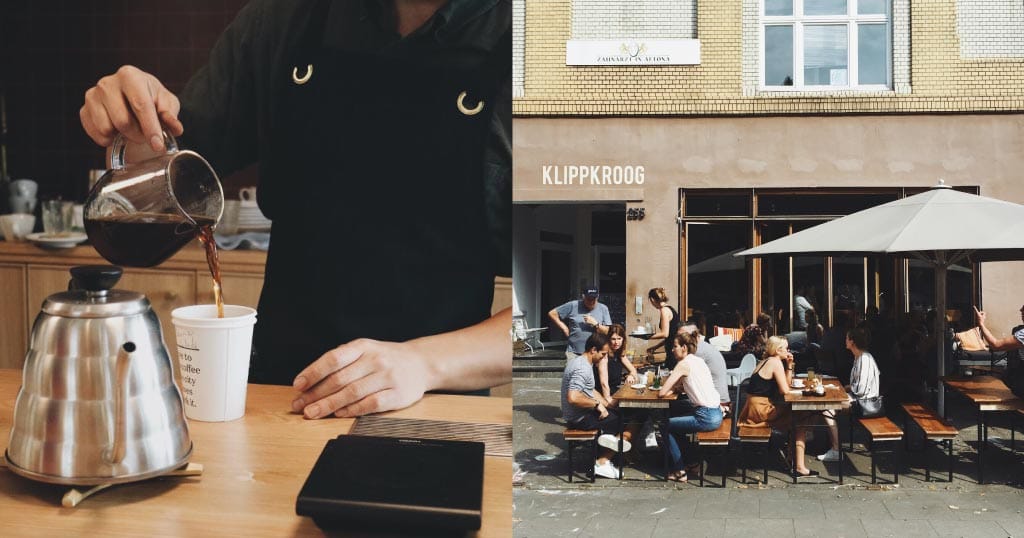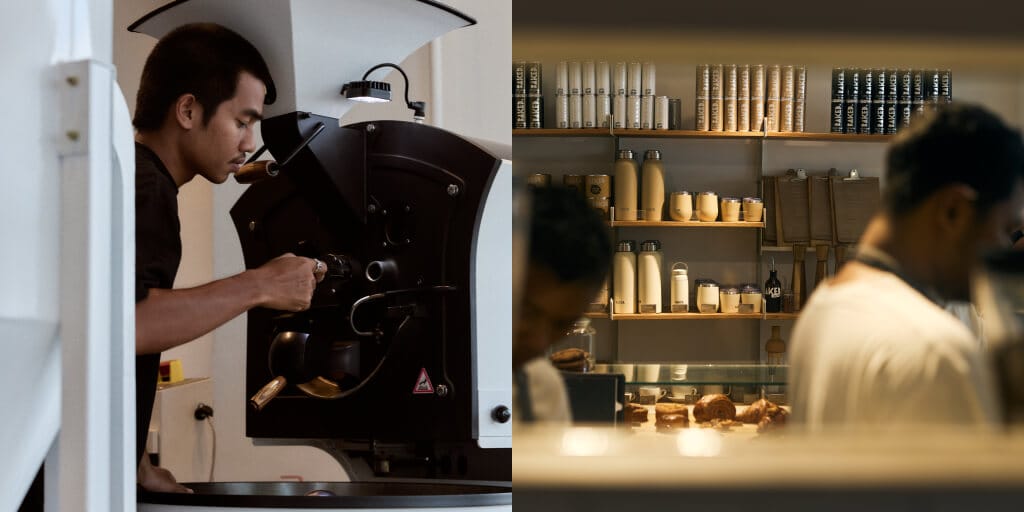Various media outlets continue to report on how consumers will be hit by rising coffee prices in 2025. The Guardian recently published an article claiming the cost of a single cup of coffee in Australian cafés could reach up to AU $12 in the next year, undoubtedly causing concern for the country’s coffee drinkers.
Despite the threat of price hikes, global consumption is expected to grow in 2025. According to the USDA’s latest World Production, Markets, and Trade Report, the world is expected to consume over 168 million 60kg bags of coffee in 2024/25, representing a 3% increase on levels in 2023/24.
For big chains, this is good news. With an established market presence, they’re safe in the knowledge that consumers will remain loyal to their brand and willing to pay a little extra for their drinks. Recently, Dunkin’ launched a new ad campaign featuring singer-songwriter Sabrina Carpenter to promote its latest signature beverage – a clear sign that big brands are banking on growing demand.
Specialty coffee shops and roasters, however, are likely to face more hurdles this year. With a bigger focus on smaller volumes of higher-scoring coffees, profit margins will continue to shrink as market volatility persists. Established specialty brands with a loyal customer base will be better positioned to weather the storm, but cafés and roasters will need to find new points of differentiation to compete with key players in the market.
I spoke to Darleen Scherer, founder of Black Sheep coffee consultancy, to learn more.
You may also like our article on why market volatility won’t slow down in 2025.

Despite rising prices, global coffee consumption is expected to increase in 2025
The past year was particularly challenging for the coffee industry. Supply shortages in Brazil and Vietnam, driven by unfavourable weather conditions, and rising export volumes, a result of uncertainty about the European Deforestation Regulations, pushed arabica and robusta futures to their highest levels on record.
This rapid increase in market prices put immense pressure on green coffee traders, forcing them to face financial hurdles while ensuring shipments still reached buyers. Further down the supply chain, roasters and coffee shops felt the pinch as already slim margins tightened even more, and many made tough decisions to raise their retail prices.
The next 12 months are also set to be difficult for the coffee industry. Estimated global production deficits and an increase in consumption volumes could drive arabica and robusta futures even higher.
Inevitably, consumers will have to pay more for their coffee. This month, several Australian media outlets have reported that a single cup of coffee could cost up to AU $12 by the end of 2025. Even in a market where specialty is considered “standard”, this is causing concern.
But despite the threat of significant price hikes, market analysts predict that global consumption will increase over the next year.
“Coffee is deeply embedded in daily routines and social experiences, particularly for younger consumers who view it as more than just a caffeine fix,” says Darleen. Using her two decades of industry experience, she founded Black Sheep in March 2024, which helps coffee businesses develop their branding, marketing, and product innovation strategies.
“The research shows that Gen Z and Millennials are actually starting to drink coffee at younger ages (around 15 years old) and see it as part of their lifestyle,” she adds. “They’re willing to pay premium prices because they value the experience and authenticity, expressing interest in personalised beverages and connection to the brands they support.”

Big chains feel reassured – and it shows
With their established market presence, key players in the coffee industry are banking on growing demand to navigate upcoming challenges. A strong brand identity and a loyal consumer base give big chains the upper hand, reassuring them that customers are likely to return even when prices inevitably increase.
Some companies are heavily investing in their marketing in a bid to draw in more customers, targeting particular demographics they know will pay higher prices. Coffee and doughnut chain Dunkin’ recently launched a tongue-in-cheek ad campaign featuring US singer-songwriter Sabrina Carpenter to promote its new Brown Sugar Shakin’ Espresso drink.
Carpenter’s hit song Espresso was one of the biggest of 2024, helping her ascend to the 11th most-played artist on Spotify and cementing her as one of the most popular musicians of the year – especially among Gen Z, with whom she has found a solid fan base.
Partnering with Carpenter helps Dunkin’ appeal to this demographic, who not only have the highest spending power in the coffee industry but also value “little treat” culture, which the Brown Sugar Shakin’ Espresso drink appeals to.
“Large chains are focusing on customisation and experiential offerings to justify higher prices. They’re leveraging their scale and technology to offer extensive personalisation options while creating viral moments through celebrity partnerships and social media campaigns,” Darleen tells me.
Starbucks’ Iced Brown Sugar Oatmilk Shaken Espresso, from which Dunkin’ has definitely drawn inspiration, helped the chain find viral success. Tapping into popular Asian beverage flavour trends in the bubble tea market, brown sugar drinks have resonated with younger consumers who seek more experiential beverages.

Specialty coffee faces more hurdles this year
Founded on the principles of craft and artisanry, specialty coffee has always strived to “do things differently” than the wider industry, offering consumers an elevated coffee experience that requires a higher price to justify its higher quality.
So, at a time when retail prices are set to increase, their point of differentiation puts specialty coffee shops and roasters in a precarious position. Maintaining the quality of their offerings without passing too much of the additional costs on to customers is a delicate balance and requires a strategic approach.
A recent article from the UK’s Telegraph claims that owning an independent café has become “near impossible” amid high coffee prices, rising staff wages, and tax increases. If their prices become too expensive, specialty coffee brands may see consumers go elsewhere. For Gen Z customers, the appeal of highly customised, experiential drinks may draw them to chains which they perceive as offering value for money.
“However, this mass-market approach often lacks the authentic, personal connection that many consumers, especially younger generations, seek in their brand relationships,” Darleen points out.
Starbucks is a case in point. Despite offering endless customisation options and convenient ordering systems, sales fell significantly over the last few years, forcing the chain to oust its CEO and bring in former Chipotle executive Brian Niccol to reinvigorate its coffeehouse culture. This shows how mobile ordering and unlimited customisation are ineffective, even harmful, when brands fail to connect with their customers.
Specialty coffee shops will need to find new ways to differentiate
To compete with established chains in an increasingly competitive market, specialty coffee brands can leverage their smaller size to their advantage.
“Independent coffee brands have a unique opportunity to lean into their authenticity and personal stories in 2025,” Darleen says. “The research shows that today’s consumers are looking for connection – they want to know not just what they are drinking but the story behind it.
“Tell your founder’s story and share their unique journey in coffee. Create intimate, community-focused experiences that big chains can’t replicate and highlight direct relationships with coffee farmers to share those stories.”
Market research reveals that up to 91% of consumers are inclined to support brands they perceive as authentic. While big chains can struggle to showcase this, specialty coffee shops and roasters are well-positioned to tap into this market niche.
“Developing signature offerings that reflect the personality and values of the brand is useful,” she says. “Use social media to showcase your indie credibility and behind-the-scenes authenticity.
“Smaller roasters should leverage quality over price. Research suggests that while big chains focus on mass customisation, independent brands can win by creating meaningful connections through storytelling, community building, and authentic experiences that reflect their unique vision and values.”

Despite the reality of price hikes, coffee consumption is expected to grow in 2025. Big chains with an established market presence are well-positioned to navigate the challenges ahead, but specialty coffee shops will need to find new points of differentiation.
Independent coffee shops and roasters are in a unique position to build strong connections with consumers, highlighting their authenticity and commitment to quality – factors which big chains aren’t able to offer.
Enjoyed this? Then read our article on why market volatility means roasters need to be strategic with prices.
Photo credits: Dunkin’
Perfect Daily Grind
Want to read more articles like this? Sign up for our newsletter!
Escape from it all while still enjoying the comforts of home. Discover Expedia's array of vacation rental options—from cozy city apartments to picturesque beachfront villas.
Source link



